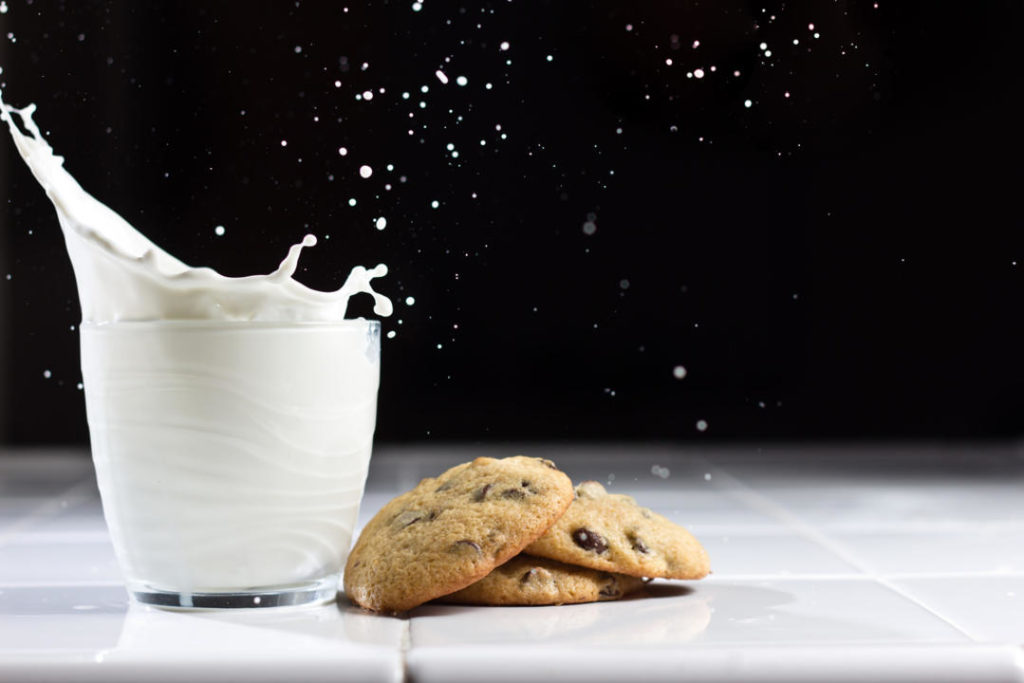
Contents
Nutrition in Milk
The nutritional composition of milk is highly complex, and it contains almost every single nutrient that the human body needs. Milk products contain up to 16 nutrients that are essential for health. Calcium, vitamin D and protein are some of the nutrients in milk products that keep the body functioning properly and could help reduce the risk of certain diseases. Just one cup of milk has 8 grams of protein, which builds and repairs muscle tissue. One cup of milk (250ml) also meets the daily values (DV) for the following nutrients (based on Food and Drug Administration guidelines):- Calcium (30 percent): Helps build and maintain strong bones and teeth
- Riboflavin (25 percent): Supports body growth, red blood cell production and metabolism
- Phosphorus (25 percent): Strengthens bones
- Vitamin D (25 percent): Helps promote the absorption of calcium
- Vitamin B (22 percent): Helps convert food into energy
- Potassium (11 percent): Regulates fluid balance and helps maintain normal blood pressure
- Vitamin A (10 percent): Promotes good vision and healthy skin
- Niacin (10 percent): Promotes proper circulation
Milk Processing
Most milk undergoes processing before you buy it at the store. The three primary steps include pasteurization, homogenization and fortification.- Pasteurization heats the milk to destroy harmful microorganisms and prolong shelf life. Normal pasteurization keeps milk safer while maintaining its valuable nutrients. Ultra-high temperature (UHT) milk is pasteurized at a much higher temperature to make it sterile. UHT milk is then packed into special containers that keep it safe without requiring refrigeration.
- After pasteurization, milk undergoes homogenization to prevent separation of the milk fat from the fluid milk. Homogenization creates a smooth, uniform texture.
- Finally, milk is fortified to increase its nutritional value or to replace nutrients lost during processing. Vitamin D is added to most milk produced to facilitate the absorption of calcium. Vitamin A is frequently added to reduced-fat, low-fat and fat-free milk. Vitamin A promotes normal vision, particularly helping the eyes to adjust to low-light settings. There are no sugars added to fat-free, low-fat, reduced-fat or whole milk. The sugars are natural sugars (primarily lactose) found in milk.
Types of Milk
Based on various sources, nutritional content added or removed nutrients milk is classified into various types. Here we discuss the most common types of milk which we use in daily life.- Whole milk: Full cream milk, also called whole milk is usually given to children, teenagers and body builders. This milk is called so because it contains all the milk fat without adding or removing anything. One glass would generally contain 3.5% milk fat, which provides about 150 calories. Full cream milk is also creamier and full of flavor. This further can be divided into two parts:
- Whole standardized milk: In this milk the fat is contained to a minimum of 3.5%.
- Whole homogenized milk: Fat globules are broken down and made to spread throughout the milk to prevent formation of the creamy layer at the top.
- Standardized milk: This is made by combining buffalo milk and skimmed milk. The fat percentage is maintained at 4.5% while the SNF is 8.5%.
- Reduced-fat milk: This milk contains 2% milk fat. The percentage of milk fat refers to the percentage of fat by weight, and much of milk’s weight is water. Drinking 2% milk is a good way to wean oneself from whole milk at first, but is too high in fat as a permanent choice, unless your diet is otherwise very low in fat.
- Low-fat milk: One-percent milk gets 23% of its calories from fat. Many people find low-fat milk more appealing and a good compromise.
- Skimmed milk/non-fat milk: This type of milk has as much fat removed as possible. It may not contain more than 0.5% milk fat by weight, and usually contains less than 0.5 gm of fat per cup, driving just 5% of its calories from fat. Skimmed milk has about half the calories of whole milk. It is the best choice for adults and is the only type of milk that should be consumed by people on strict low-fat diets.
- Single toned milk: Adding skimmed milk powder and water to whole milk makes single toned milk. It has about 3% fat and minimizes body’s absorption of cholesterol from the milk. It contains almost the same nutrition as whole milk except the fat-soluble vitamins. One glass of toned milk provides around 120 calories.
- Double toned milk: This milk is obtained by adding skimmed milk powder to whole milk and has about 1.5% fat content. Double toned milk is ideal for those trying to maintain weight as it keeps the calorie intake under control and also helps in weight loss.
World Milk Day
World Milk Day is celebrated all across the world on annual basis on 1st of June. It is celebrated to increase the common public awareness about all aspects of the natural milk such as its natural origin, milk nutritional value and various milk products including its economic importance throughout the globe. The World Milk Day “Raise a Glass” campaign will follow the sun – starting at sunrise in New Zealand and moving around the globe – to create a 24-hour wave of dairy promotion.